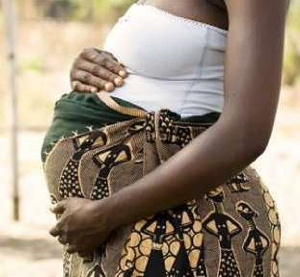Statistics from the 2022 Ghana Demographic and Health Survey (GDHS) indicate that one in every 10 (10.9%) adolescent girls aged 15 to 19 years has had a live birth.
The survey carried out by the Ghana Statistical Service was to highlight challenges such as early marriage and childbearing, and deprivation of education that prevent young girls from reaching their full potential.
This was to mark the International Day of the Girl Child celebrated annually on October 11; this year’s theme is "Invest In Girls' Rights: Our Leadership, Our Well-being".
Findings from the survey indicate that;
The percentage of adolescents that have had a live birth increases with age, with 19-year-olds recording the highest rate of almost a quarter (23.8%).
In 10 out of the 16 regions, more than 10 percent of adolescents 15 to 19 years have had a live birth with the Bono East Region recording the highest, thus, one in every five (19.1%) girls in this age range have had a live birth.
The Savannah (17.5%) and the North East (17.5%) regions are tied for the second highest followed by the Ashanti Region (16.8%).
The Greater Accra Region (5.4%) has the lowest percentage and is the only region to record a figure less than half the national average.
The percentage of girls 15 to 19 years old that have had a live birth is almost twice in rural areas (14.4%) compared to urban (8.0%).
More than a quarter (26.5%) of adolescent girls with no education had had a live birth compared to 20.3 percent of those with primary education.
The percentage of girls with secondary education (8.6%) who had a live birth was less than half of those with primary or no education.
Adolescent girls in households in the lowest wealth quintile (17.5%) had the highest percentage with a live birth, more than four times the figure recorded for girls in the highest wealth quintile (3.7%).
Finally, about one in every 10 (9.1%) adolescents aged 15 to 19 years had been in a marital union during the 2021 Population and Housing Census: 5.5 percent were currently married, 3.2 percent were currently in informal unions or living with a partner, and 0.4 percent had formerly been married.
Latest Stories
-
KATH renal unit undergoes transformation, dialysis machines increase from two to 20
2 minutes -
“It’s strange”- Former GPHA D-G questions alleged auctioning of ECG containers by GRA
8 minutes -
‘We’re committed to bridging digital literacy skills gap’- ALX Country Manager
18 minutes -
I don’t want any appointment, I’m only focused on my constituency – A Plus
22 minutes -
ECG’s ‘missing’ containers can be found – Former GPHA D-G
28 minutes -
Government to publish list of locally-made items for mandatory procurement by state agencies
36 minutes -
Ghana’s Agri-Revolution: Solar-powered cold storage and PAYGO financing unlocks untapped potential
46 minutes -
Latif Iddrisu vrs IGP & AG: State Attorney fails to show up again even after initial pledge
1 hour -
Supreme Court grants NDC and candidates extra time to respond to EC in election case
1 hour -
Morocco U-17 set for crucial clash against Zambia in AFCON Group A
1 hour -
63 Nsawam Prison inmates earn degrees from UCC
2 hours -
KNUST student allegedly killed by lover to be buried this weekend
2 hours -
Finance Minister commits to timely release of funds for School Feeding caterers
2 hours -
I wanted to be a rapper – Yvonne Nelson
2 hours -
Address issues affecting teachers by April 30 – GNAT tells govt
2 hours

